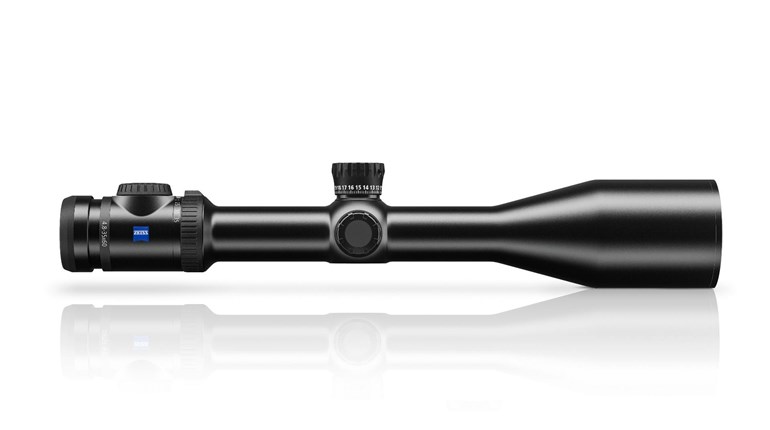
During my testing of the Blaser Tactical 2 rifle, all four barrels were equipped with high-quality, high-magnification scopes. The .338 Lapua Mag. had a Schmidt & Bender 5-25x56 mm scope with a 34 mm tube. The other three barrels all wear 6-24X Zeiss optics.
The .300 Win. Mag. and .223 Rem. both had mil-dot reticles, but the .308 Win. had the Zeiss Rapid-Z 1000 reticle.
The Rapid-Z is well thought out and capable of an incredible range of variations. It can be used on any rifle with any cartridge and dialed in using ballistic information to an amazing degree of precision.
Zeiss offers four different Rapid-Z reticles. While all can be used with any cartridge, the engineers did have some specifics in mind when designing the reticle. The 1000 is designed for use with a tactical rifle chambered in .308 Win. and that is, of course, the model I used for testing the Blaser Tactical 2.

It has 10 primary elevation cross-bars, five above center and five below. There are also secondary bars between the primaries. Also, each of these bars has hash marks for wind correction. The reason for the bars above the center is to give close-range aiming points with a long-range zero. I elected to use a 200-yard zero, which makes the upper bars mostly irrelevant and the No. 10 bar just right for an 816-yard shot.
The reason I know this is the Zeiss website has a calculator for the Rapid-Z. Simply plug in your ballistic data and it figures out the points of aim for you at the proper distances.
Those calculations I quoted are at the full 24X power of my scope. The Rapid-Z reticle is in the second focal plane, so it does not change relative size as the magnification is changed. I much prefer this style of reticle to a first focal-plane model, where the reticle grows larger as the power is increased. I know a lot of sniper types like the first focal plane so they can range with the reticle, but most of us lack the time or knowledge to learn this process with any degree of confidence.
The Rapid-Z calculation website also has a function that will figure out the optimal power setting for your scope based on using the No. 10 bar for a 1,000-yard shot. For example, with my load I would need to switch to a 300-yard zero and then turn the 24X scope down to 17.49X for a 1,000-yard hold with the No. 10 bar.
To test Zeiss' claims, we went to my friend's range where he has a target up at 778 yards. With a 200-yard zero and at 24X, the No. 10 bar is zeroed for 816 yards. Of course, there are always some variations for atmospheric conditions and ballistic variables, but I found that using the No. 10 bar resulted in "bang…clang" every time. While there was a 38-yard difference between the calculations and the actual target, that's pretty much nothing at that range, particularly considering the outside variables. No reticle can get you dead on every time simply by running the numbers through a computer, but the Rapid-Z comes pretty darn close.




































